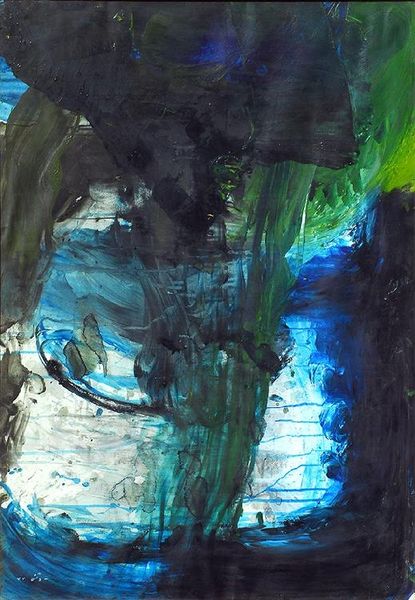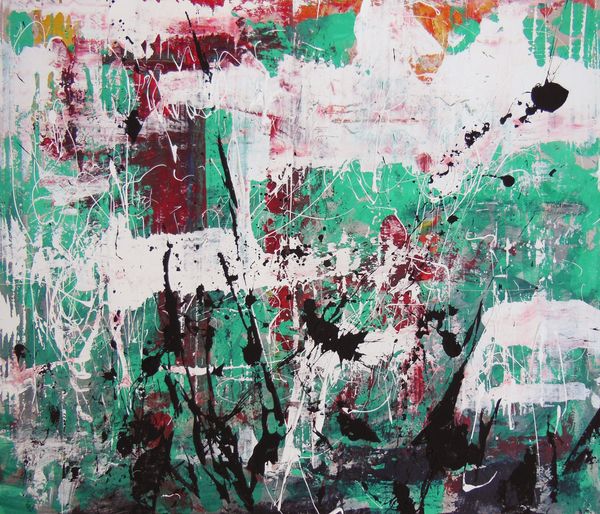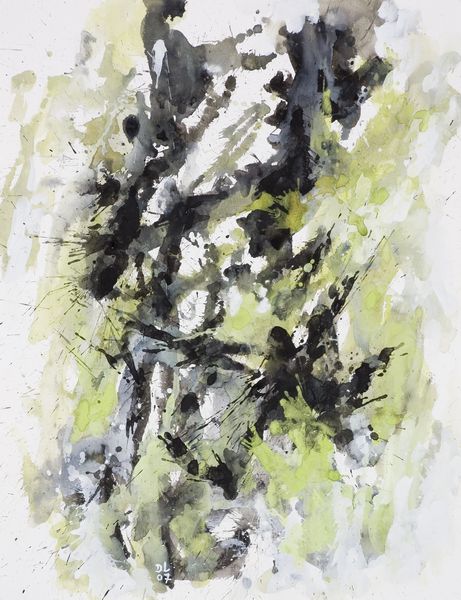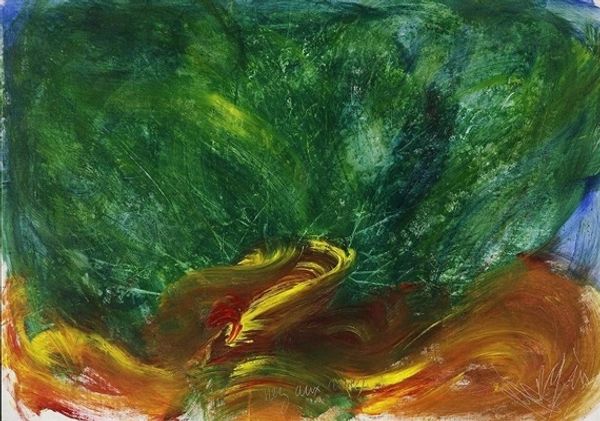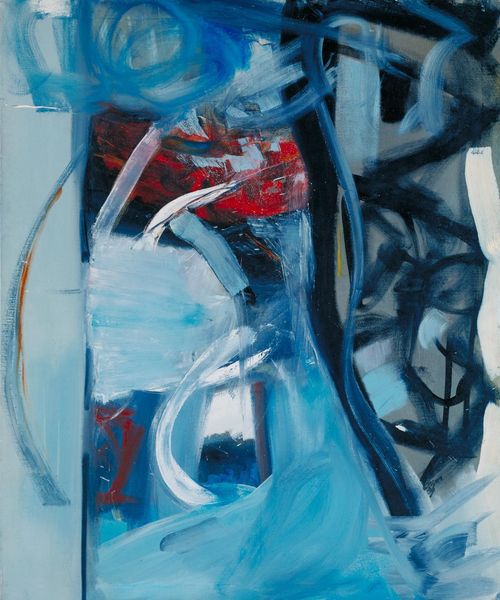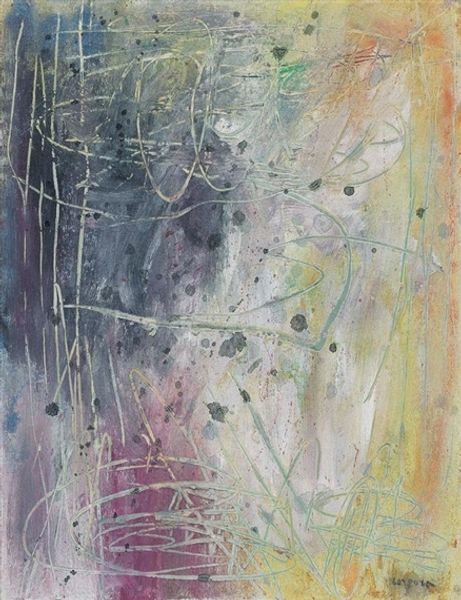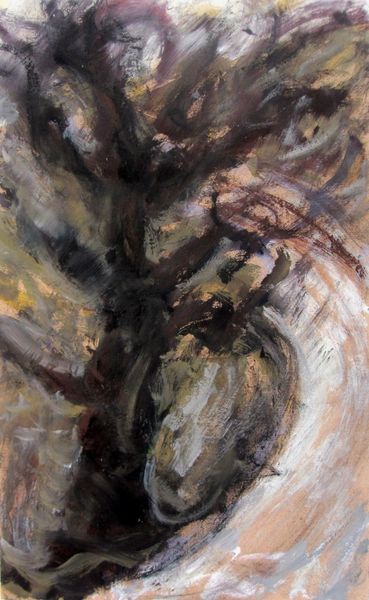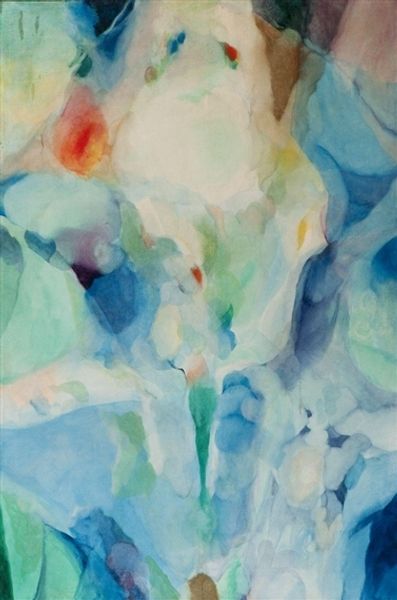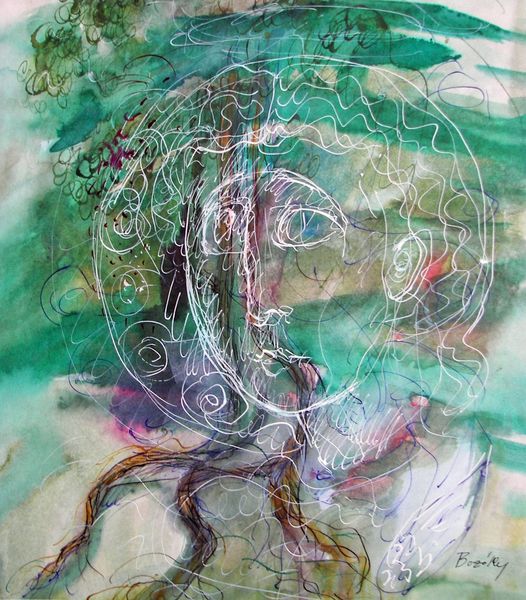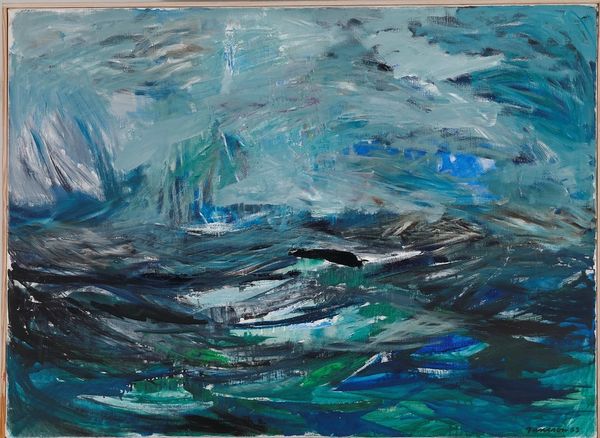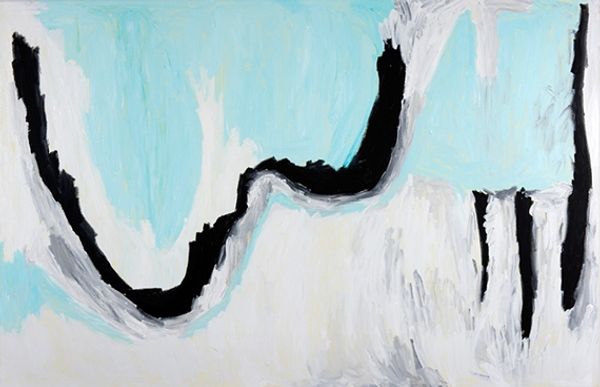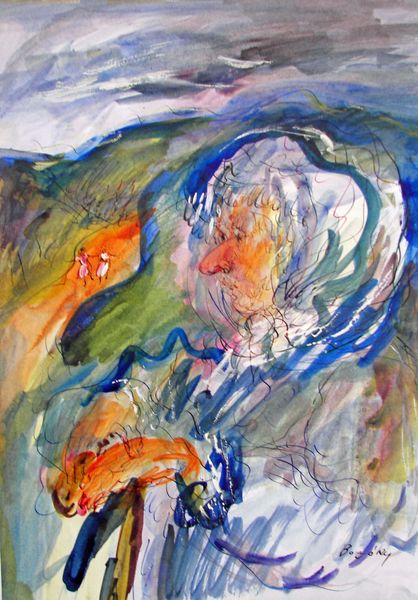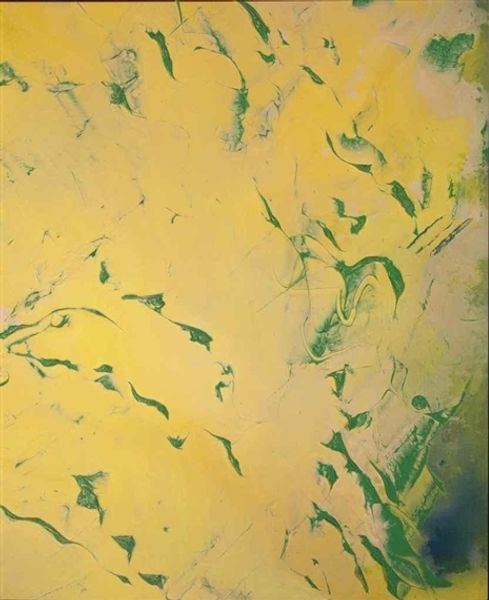
oil-paint, gestural-painting
#
abstract-expressionism
#
abstract expressionism
#
abstract painting
#
oil-paint
#
gestural-painting
#
acrylic on canvas
#
abstraction
#
modernism
#
gutai
Copyright: Kazuo Shiraga,Fair Use
Curator: Standing before us is “Itazura Ni,” an oil on canvas work completed in 1960 by Kazuo Shiraga, a key figure in the Gutai Art Association. Editor: It’s quite striking – chaotic even. The vigorous brushstrokes of green and white almost clash, yet somehow create a sense of raw energy. Curator: Shiraga was renowned for his unique performance-based painting method. He’d suspend himself above the canvas and use his feet to manipulate the paint. The canvas becomes an arena of action, reflecting his engagement with material and gesture. Editor: The gesture is palpable. The streaks and splatters remind me of a force of nature, like a violent storm or an overflowing river. I wonder what the significance of those contrasting colours – green and white - could be? Is it deliberate or more incidental? Curator: Considering Shiraga's involvement with Gutai, I'd argue that chance plays a role, but is not the defining factor. Gutai artists explored the expressive potential of materials in their raw state. Shiraga's process, though performative, tapped into a deep wellspring of tradition. There’s an echo of calligraphy in the gestural marks and forms which resonate powerfully within the work. The title roughly translates to "mischievously," which may indicate something more playful but nonetheless deeply ingrained in a serious methodology. Editor: That interplay between control and chance is certainly intriguing. Viewed through the lens of post-war Japan, there's possibly a narrative of reconstruction here: taking the chaos, the 'mischief', and building something new out of it. It strikes me that Shiraga is harnessing physical and symbolic resources here. Curator: Absolutely. Artworks are embedded in a socio-historical nexus of activity that demands contextualization and recognition, in my view, as key to our viewing. His oeuvre contributes in its own way to a history of postwar recovery. The gestural strokes represent, for me, renewal – a pushing towards, gestating something new from an apparent nothingness. Editor: Seeing it like that really adds a whole new dimension. A sense of dynamism rooted in historical context – remarkable. Curator: Indeed, Shiraga’s actions and images possess a complexity that’s both revealing and culturally powerful.
Comments
No comments
Be the first to comment and join the conversation on the ultimate creative platform.
